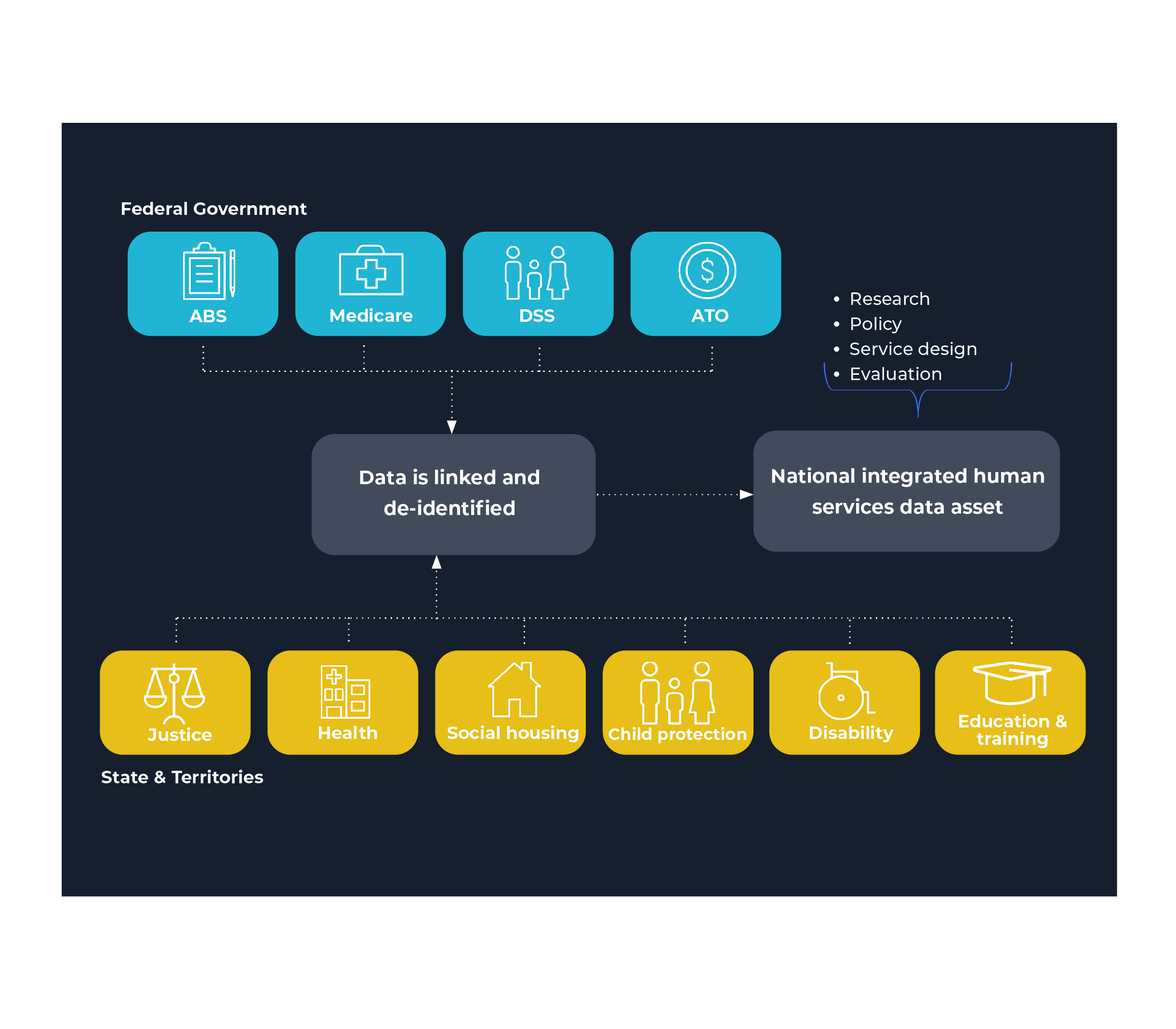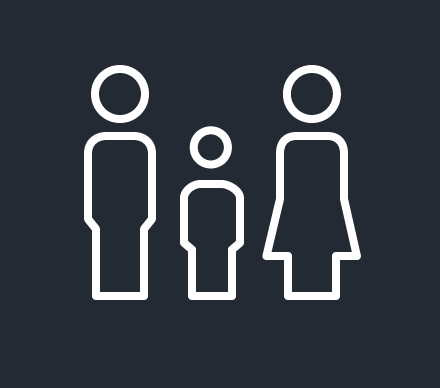Explore our Climate and Energy Hub
We need to use all the tools at our disposal to address the issue of poverty.
As part of the UN Sustainable Development Goals (SDGs), Australia committed in 2015 to at least halve the proportion of men, women and children of all ages living in poverty. Six years on and with the proportion of Australians living in poverty remaining above 13 per cent, it is apparent that Australia has made no discernible progress against this goal.
Governments have set no intermediate targets, milestones, reform actions or reporting framework to reach this end goal. As a society we have increasingly relied upon organisations external to government to bring pressure and accountability to address disadvantage. Despite significant energy and effort this is not working.
If current trends in child poverty are repeated for children expected to be born over the next decade, this points to a further 280,000 to 550,000 young Australians encountering child poverty in the future. These children will likely face developmental disruptions at a critical age and significantly increased risks of poverty in adulthood, becoming the next generation of disadvantaged Australians.
This outcome is not inevitable, but if we do not proactively respond to past performance and evidence of policy shortcomings it is a choice we are making as a nation. We could and should choose to fundamentally change the way we support people in disadvantage and act earlier to prevent disadvantage becoming entrenched across generations.
We need to use all the tools at our disposal to address this issue. There are growing opportunities and momentum across governments to connect and use administrative data, which could be transformative in overcoming disadvantage. Linked data can be an enabler to connect programs and resourcing more effectively across governments in support of better outcomes for people at risk of entrenched disadvantage from birth.
Australian governments – through the provision of human services including education, healthcare, income support, social housing, justice and child protection – collect a vast array of administrative data. When linked together in a careful and responsible way this data can be used to provide a sophisticated picture of the paths, predictors and preventors of entrenched disadvantage. This enables proactive delivery of better targeted, timely and integrated support to families and their children at risk.
We know that along with better economic opportunities, the right combination of supports such as remedial family therapy, drug and alcohol management and mental health programs can improve the lives of young people and break entrenched disadvantage. Linked administrative data can be used to customise and integrate such programs so that they are proactively provided to the most vulnerable, addressing the specific needs of individuals at the right times. In addition, linked administrative data enables a focus on early intervention.
We know that intervention in early childhood is more successful at influencing outcomes in adulthood than interventions in later childhood. Linked administrative data provides information on pathways from childhood through to adulthood, allowing the design and implementation of programs that disrupt disadvantage at critical points. Linked data can also be used to underpin the case for investing in preventative programs by more accurately estimating the costs and benefits over a person’s lifetime.
The agreement on using data to overcome disadvantage would benefit from being part of a larger agreement that also addresses other key aspects, such as the adequacy of income support and the availability of affordable housing.
For front-line workers, more effective linked data can and should enable better identification and prioritisation of the most disadvantaged who are the least engaged with services. We already have a multitude of prevention services designed to reduce adverse outcomes for socioeconomically disadvantaged children and adults. Yet many of these programs are stretched too thin, trying to serve a larger number of clients than they were designed to, resulting in insufficient time to engage and re-engage with clients. Additionally, these programs tend to address the needs of only those families and children who are already engaged in government support through referrals from GPs, midwives or school social workers. We need to change how we engage the most disadvantaged in the community to a ‘we find you’ approach, rather than relying on families to seek out assistance, or waiting until families are in crisis and become known to service providers.
Breaking this cycle requires services to be effective in reaching and serving the most marginalised and at-risk children and families in the community. Integrated data and advanced analytics offer potential for reaching and serving people better, earlier and more intensively. Mobilising this data for impact and benefit requires a careful, responsible and sustainable approach founded on clear objectives, frameworks and coordination across governments. Social licence will need to be built over time, but with the use of appropriate guardrails, community consultation and communication of benefits, this can be achieved.
TIMELINE FOR DATA INTEGRATION
.png)
There are examples from both Australia and overseas that point to the benefits of integrated data, including New Zealand’s Integrated Data Infrastructure, South Australia’s Early Intervention Research Directorate, and early childhood intervention projects in Scotland and Romania. The evidence is building that integrated data approaches can make significant inroads into entrenched disadvantage.
To read more, download Disrupting Disadvantage Part 2.
¹ Please note that average values have been used in some years due to the unavailability of data.
CEDA is recommending that governments develop and implement a new National Agreement to reduce disadvantage and poverty, with a focus on the development and use of integrated data as a circuit breaker for early intervention.
The agreement should articulate an overarching objective to measurably reduce disadvantage and poverty towards Australia’s SDG target.
This agreement should be subject to community consultation and include a range of complementary initiative.
This proposal recognises that disadvantage is an issue that needs joined-up coordination and support from both levels of government. The Commonwealth and state governments each fund and administer supports and services that are critical to disadvantaged populations, including some that are jointly funded and interdependent.
The agreement should focus on two priority actions to integrate data and enable early intervention.
Recommendation 1
Establish a consolidated linked national human services data asset by 2025.
- Leverage the Intergovernmental Agreement on Data Sharing between Commonwealth and State and Territory governments, collaboration by the Data and Digital Ministers and lessons from the pilot phase of the National Disability Data Asset, to build a new integrated human services asset by 2025.

The recently agreed Intergovernmental Agreement (IGA) on Data Sharing commits all jurisdictions to share public sector data as a default position, where it can be done securely, safely, lawfully and ethically.
This IGA recognises data as a shared national asset and aims to maximise the value of data to deliver outstanding policies and services for Australians by informing better decision-making, evaluation, implementation and service delivery.
Governments can leverage this ground-breaking agreement to establish an integrated de-identified human services data asset – linking data from both federal government (such as Medicare and Centrelink) and state governments (such as health, child protection and justice data).
This asset would provide the basis for designing and evaluating the effectiveness of targeted, timely and integrated support to families and their children to prevent child poverty as early as possible.
Use of the data asset would be subject to strict protocols and with the purpose of improving service delivery and supports for the community.
Integrated data on this scale would facilitate better understanding of the paths, predictors and preventers of entrenched disadvantage.
Identifying the scale of data sharing and its use could build from the work done during the pilot phase of the National Disability Data Asset (NDDA), which data and digital ministers supported in late 2019.
High-level architecture of the integrated human services data asset

Recommendation 2
Pilot predictive analytics to design early intervention services for young Australians at greatest risk of disadvantage.
- States could opt-in to pilot predictive analytic approaches based on the maturity of their data assets and existing service performance.
- Piloted services may include protecting children from exposure to maltreatment, inter-partner violence, severe mental health and substance abuse

While an integrated de-identified human services data asset will better connect the dots between Commonwealth and state programs and assist policy design and evaluation, it will not directly assist frontline practitioners in identifying and supporting those most in need.
This will require linked identified data at the state and territory level. The potential benefits of combining data with predictive analytics in this way are significant, but the threshold for community acceptance and necessary safeguards are understandably much higher.
There is, after all, a significant difference between anonymised data being utilised in high-level policy design and a teacher having access to a family’s health data. As part of the agreement, states could therefore opt-in to pilot new approaches to service provision based on the use of predictive analytics.
Pilots would be based on the maturity of their data assets and existing service models. Services could be piloted first in areas where social licence and community acceptance of using identifiable linked data is likely to be higher.
For example, protecting children from exposure to maltreatment, inter-partner violence, severe mental health and substance abuse.
By piloting some interventions and communicating the approach and benefits to the community, social licence will be able to build over time.
But this will need to be done methodically in consultation with impacted communities, practitioners and the community services sector.
Significant data storage, use and application safeguards will need to be developed, communicated and implemented alongside these pilots.
Guardrails, such as those developed by the Centre for Social Data Analytics, will need to be in place to ensure data is only used to benefit communities and strengthen services and support.
Complementary initiatives
- Lift and maintain the adequacy of income support through adequacy reviews.
- Lift availability and affordability of suitable rental accommodation through an appropriate mix of investment in Commonwealth Rental Assistance and public housing.

Machine learning and other big data methods often rely on integrated data from across multiple systems. This requires the data to be integrated in an identifiable way and to be available to doctors, teachers and other frontline workers from across the social service sector.
If we are to advance the agenda of using integrated administrative data for serving at-risk families, a strong social licence will be needed. We need the broader community to agree that the benefits from the use of the data is in proportion to the problem that needs to be solved, and trust that the data will be used in the way they expect.
The Centre for Social Data Analytics (CSDA) uses these guardrails when advancing the use of integrated data for machine learning tools applied to high stakes and sensitive cases.
AGENCY OWNERSHIP
The agency needs to be seen to take ownership for the procurement, development and deployment of the tool. Agency leadership should have a strong understanding of the solution on offer, and be confident that the tool is a good fit for the policy and practice challenges they face. It is the agency’s job to make sure the tool is developed and introduced in a way that is appropriate for, and acceptable to, the local community. The agency may consider establishing a governance entity to ensure accountability for major project decisions. The agency should be prepared to publicly explain and justify the project.

COMMUNITY VOICE
To deploy predictive analytics in a trusted way, the agency needs to engage purposefully with its community, with a focus on groups who will be most affected. That might include advocacy groups, provider groups and individuals who have previously engaged with the government system, as well as leaders in related domains (for example health, law enforcement). The agency should plan community engagement from the start of the project. The chosen approach should meet the unique needs of their local community and should stand up to scrutiny upon deployment.

EVALUATION
After deployment, the accuracy and impact of the updated decision-making system, which now includes the tool, needs to be evaluated. Evaluation would usually take the form of a quasiexperimental study or a randomised controlled study. Replication is another important way to ensure that the tool introduced is the same tool described in the methodology document.

ETHICAL
REVIEW
An ethical review identifies ethical concerns about the proposed implementation of a tool and in response the agency should explain the steps it will take to address those concerns. If existing ethical guidance for a use case is available, a new ethical review may not be necessary. The agency should ensure that promised steps are taken and areas of concern are monitored, and should be prepared to report on the ongoing success of its response to ethical concerns.

DOMAIN
ENGAGEMENT
Development of the tool should include input from one or more experts in the relevant domain. It is essential that the agency learns from, and works closely with, the frontline staff who will use the tool and be most affected by its introduction. The agency should engage regularly with those staff, providing high quality education and training, and involve key staff in the design of new business processes.

TRANSPARENCY
AND
FAIRNESS
A commitment to transparency and fairness is essential. Transparency means the agency is actively working to share the thinking behind, and details of, the project. Fairness measures, including subpopulation analyses, external validation, ongoing quality assurance and post-deployment evaluation are the best ways the agency can counter common concerns about bias in the tool.

The Hello Baby Pilot
A Predictive Risk Model (PRM) was used by Pennsylvania's Allegheny County in 2020 to identify families with the potential for future child maltreatment. It provides a case study of how the use of integrated data can identify at-risk children.
What problem was the Hello Baby PRM model trying to solve?
The county found that almost half the children who were severely maltreated were never known to child protective services. Additionally, many of the children identified by the PRM were not being served by county-funded prevention programs.
How does the Hello Baby PRM model work?
When a child is born, the county uses the birth record data to contact parents and explain that county held data about them will be used to identify eligibility for programs. Parents are given time to opt out. Once the opt-out period has passed, the PRM runs.
Those families identified as being at the highest risk are proactively engaged – with phone calls and personal visits from community-based workers who have lived experience, as well as strong community relationships.
Using PRM versus simple eligibility rules such as poverty or teen-parenthood
The county compared using a threshold model that used either Medicaid eligibility (as a proxy for poverty) or teen motherhood to recruit families.
They calculated the relative risk of adverse outcomes for the eligible families versus non-eligible families.
They found that using PRM as the eligibility rule identified families at considerably elevated risk of adverse outcomes.
For example, they found that a family recruited using the PRM tool was at 22 times higher risk of abuse or neglect, 14 times higher risk of homelessness and 27 times higher risk of maternal mortality.
By contrast, eligibility based on the family enrolled in a poverty-related program or with a teenage mother were only between three to five times higher risk.
| Families selected using PRM Tool | Families receiving a poverty related program (Medicaid) | Teen mothers | |
|---|---|---|---|
| Number of eligible children | 2626 | 2719 | 2285 |
| Abuse and neglect (removals)* | 22.24 [17.50, 28.25] | 3.05 [2.56, 3.64] | 3.57 [2.99, 4.27] |
| Homelessness services assessment* | 14.81 [12.18, 17.99] | 3.08 [2.34, 4.08] | 2.27 [1.62, 3.18] |
| Maternal mortality | 27.44 [11.74, 64.15] | 5.39 [1.99, 14.59] | 2.2 [0.51, 9.4] |
| Child post-neonatal mortality | 4.47 [2.6, 7.7] | 2.2 [1.10, 4.38] | 2.31 [1.12, 4.79] |
| Violent, accidental and maltreatment related child mortality/near-mortality | 5.54 [3.4, 9.0] | 2.83 [1.54, 5.20] | 3.26 [1.78, 5.96] |
